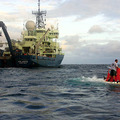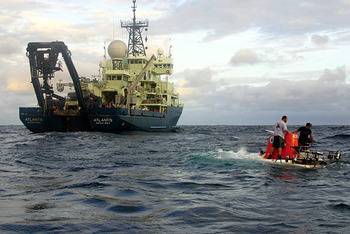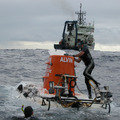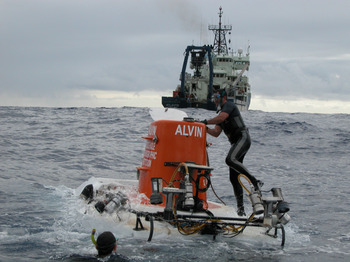2000 MARVEL Cruise AT3-60
R/V Atlantis and D/S Alvin
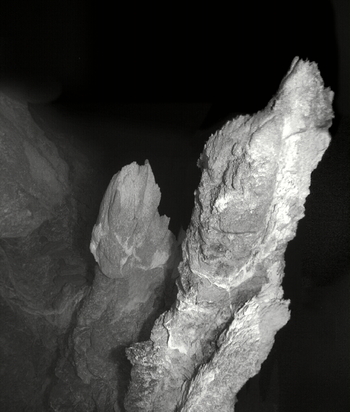
One of the very first images taken of the Lost City chimneys during its discovery using the WHOI o ...

First Images of Lost City
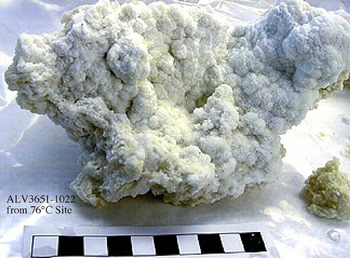
One of the first carbonate samples recovered from the Lost City, composed of aragonite, calcite an ...

Carbonate chimney sample from 2000 discovery dive
The purpose of this National Science Foundation cruise in 2000 was to document the detailed structure, composition, and alteration history of the Atlantis Massif to help understand how oceanic core complexes form. Donna Blackman, Scripps Institution of Oceanography, was the Chief Scientist and Deborah Kelley (University of Washington) and Jeff Karson(Duke University; now at Syracuse) were co-investigators. The cruise included sidescan surveys of the massif, and a series of Alvin dives, largely focused on the southern face of the massif that provides a tectonic window into these systems. The dives included significante rock sampling of the basement rocks, structural measurements on the outcrops and gravity measurements. During the night the Argo II camera system was used to obtain mosaics of very steep outcrops at scales not attainable by looking out the window of the submersible. A series of dredges were also completed to augment samples recovered by Alvin.
The most spectacular and important initial finding of the cruise was the discovery of the Lost City Hydrothermal Field, the first of its kind in the worlds oceans [see Kelley et al., 2001]. The field was discovered with the Argo camera system with Gretchen Fruh-Green and Barbara John in the control room. Deb Kelley and Jeff Karson joined the team during the first imaging of the system, helping to direct initial exploration of the field. Two days later Kelley and Karson dove to the field for the first time with Pat Hickey as Expedition Leader. The initial dive was only 5 hrs, but spectacular documenting the tallest chimney known in the worlds oceans--the 60 m tall carbonate tower Poseidon. A few rock, fluid, and animals were recovered, providing important information that laid the foundation for the follow-on cruise in 2003.

